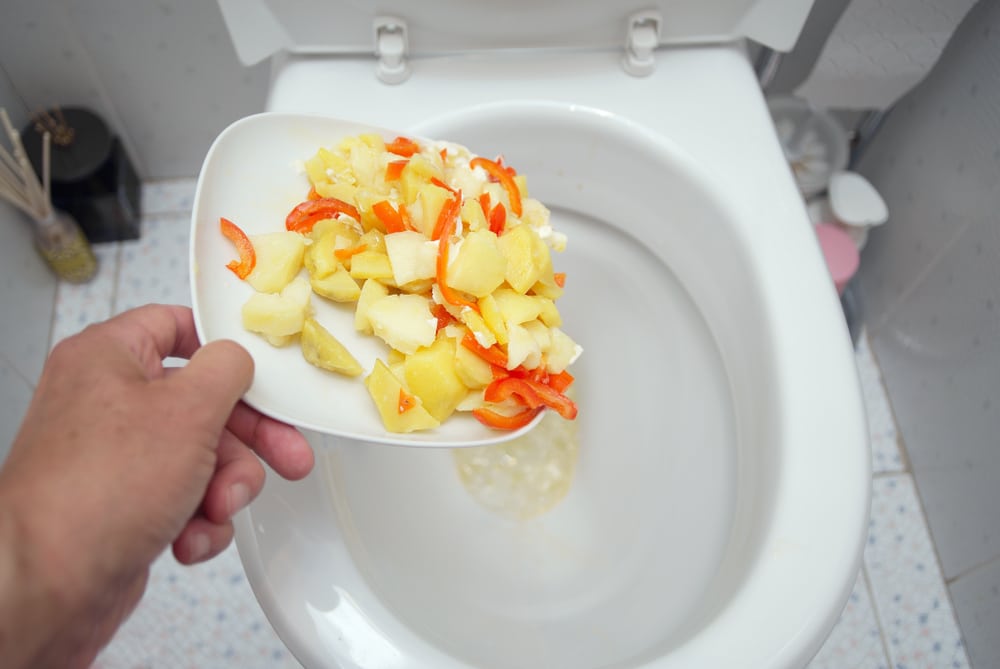Are You Capable to Flush Food in the Toilet?
Are You Capable to Flush Food in the Toilet?
Blog Article
How do you really feel in regards to Is it safe to flush food (especially rice) down the toilet??

Introduction
Lots of people are often confronted with the dilemma of what to do with food waste, especially when it pertains to leftovers or scraps. One typical question that develops is whether it's all right to purge food down the toilet. In this write-up, we'll explore the reasons individuals might take into consideration flushing food, the effects of doing so, and alternative techniques for proper disposal.
Reasons that people might take into consideration purging food
Absence of recognition
Some individuals might not recognize the prospective injury brought on by flushing food down the commode. They may wrongly think that it's a safe practice.
Benefit
Flushing food down the toilet might feel like a quick and very easy remedy to getting rid of undesirable scraps, particularly when there's no nearby trash bin readily available.
Negligence
Sometimes, people might merely choose to flush food out of large laziness, without taking into consideration the repercussions of their activities.
Effects of flushing food down the toilet
Ecological impact
Food waste that ends up in waterways can contribute to contamination and harm water environments. Furthermore, the water used to flush food can strain water sources.
Plumbing concerns
Flushing food can lead to blocked pipelines and drains, causing costly pipes fixings and inconveniences.
Sorts of food that ought to not be flushed
Fibrous foods
Foods with fibrous appearances such as celery or corn husks can obtain tangled in pipes and create obstructions.
Starchy foods
Starchy foods like pasta and rice can absorb water and swell, resulting in obstructions in pipelines.
Oils and fats
Greasy foods like bacon or food preparation oils ought to never be purged down the commode as they can strengthen and trigger clogs.
Proper disposal approaches for food waste
Utilizing a waste disposal unit
For homes furnished with garbage disposals, food scraps can be ground up and purged through the pipes system. Nonetheless, not all foods appropriate for disposal in this fashion.
Recycling
Particular food packaging materials can be reused, minimizing waste and minimizing ecological effect.
Composting
Composting is an environmentally friendly way to get rid of food waste. Organic materials can be composted and utilized to improve dirt for horticulture.
The value of correct waste administration
Decreasing ecological damage
Appropriate waste administration practices, such as composting and recycling, help decrease contamination and maintain natural deposits for future generations.
Protecting plumbing systems
By staying clear of the method of flushing food down the toilet, property owners can protect against expensive plumbing repair services and keep the honesty of their pipes systems.
Verdict
Finally, while it may be tempting to purge food down the commode for convenience, it is necessary to recognize the possible effects of this action. By adopting correct waste monitoring techniques and throwing away food waste properly, people can add to healthier plumbing systems and a cleaner setting for all.
FLUSH FOOD DOWN THE TOILET?
FLUSHING FOOD CAN CAUSE BLOCKED DRAINS IN YOUR HOME
All of the plumbing fixtures in your home are connected to the same sewer pipe outside of your home. This outdoor sewer pipe is responsible for transporting all the wastewater from your home to the Council sewer mains. Even small pieces of food that go down the kitchen sink can cause problems for your sewer. It should therefore be obvious that flushing larger bits of food, such as meat, risks a clog in either the toilet itself or the sewer pipes. Flushing greasy food is even more problematic because oil coagulates when it cools, coating the interior lining of your pipes.
THE TOILET IS NOT A BIN
Food isn’t the only thing that people shouldn’t be flushing down the toilet. People use the toilet to dispose of all kinds of things such as tampons, makeup wipes, dental floss, kitty litter and even underwear. Water goes to great lengths to educate residents about the high costs and stress placed on wastewater treatment systems simply from people flushing the wrong stuff down the toilet. It costs taxpayers millions of dollars each year, and homeowners thousands in blocked drain repairs.
FLUSHING FOOD IS A WASTE OF WATER
Flushing food is a waste of our most precious resource - water. In June this year Level 1 water restrictions were introduced to protect water supply from drought conditions. Much of New South Wales continues to be affected by prolonged drought with recent figures revealing up to 97 per cent of the state remains in drought. Depending on whether you have a single or dual flush toilet, every single flush uses between five and 11 litres of water. In the current climate this is a huge amount of water to be wasting on flushing food that should be placed in the bin (or better yet, the compost).
https://www.jabplumbingsolutions.com.au/blog/can-you-flush-food-down-the-toilet

I recently found that blog post about Think Twice Before Flushing Food Down Your Toilet while surfing the web. Loved our post? Please share it. Help someone else find it. I recognize the value of reading our article about Flushing Food Down the Toilet?.
Visit Url Report this page